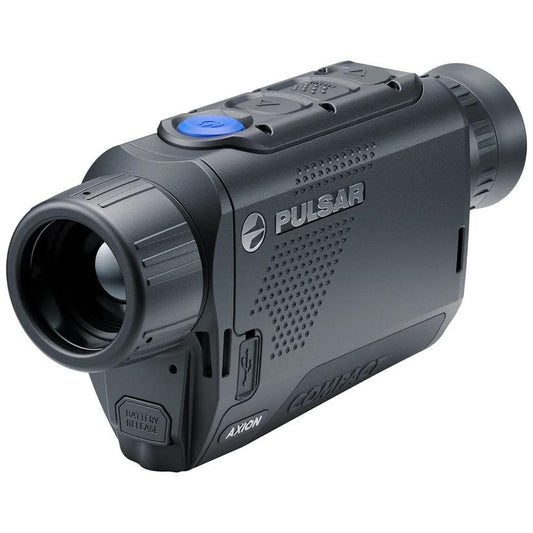

Pulsar Axion XG30 Compact Thermal Monocular Black 2-16x delivers precise thermal imaging for effective long-range observation. The monocular features adjustable brightness and contrast levels, ensuring detailed visibility in low-light conditions. This functionality allows you to track game or scout terrain with confidence, making it suitable for various outdoor activities.
Constructed with a lightweight magnesium alloy, this monocular is built to last while remaining portable. The advanced 5 GHz WiFi connectivity enables quick sharing of your findings with friends or reviewing data on your smartphone. The Axion XG30 offers a competitive edge for precision shooting, making it an essential addition to your gear.
Features:
- HIGH-RESOLUTION DISPLAY for clear imagery: Experience high-quality rendering of targets and backgrounds.
- THREE SIGNAL AMPLIFICATION LEVELS for customizable visibility: Tailor your observation settings to any environment.
- DURABLE MAGNESIUM HOUSING protects against impact: Built to withstand harsh conditions while keeping internal components safe.
- 5 GHz WI-FI CONNECTIVITY for seamless operation: Enjoy enhanced performance with fast data transfer rates.
- LIGHTWEIGHT DESIGN for easy portability: Take the Axion anywhere without being weighed down.
- ENVIRONMENTALLY RESILIENT: Protects against moisture, heat, and cold for reliable performance in any climate.
- SMOOTH IMAGE FILTERS for less noise: Improved image quality during extended observations for precise targeting.
- USER-FRIENDLY INTERFACE for effortless navigation: Intuitive controls make operation quick and straightforward.
Technical Specifications
| Specification | Details |
|---|---|
| Magnification | 2-16x |
| Lens Diameter | 30mm |
| Weight | 0.6 kg |
| Dimensions | 160 x 50 x 60 mm |
| Material | Magnesium Alloy |
What’s in the Box?
- Thermal Monocular
- Lens Covers
- Padded Carrying Case
- User Manual
Customer Reviews
“The clarity is just outstanding! Perfect for night hunts.”
“Lightweight yet extremely durable. My go-to for outdoor adventures!”
“WiFi connectivity makes it easy to share images with my hunting buddies.”
FAQ
How does the Pulsar Axion XG30 perform in low-light conditions? The Axion XG30 excels in low-light settings due to its advanced thermal imaging capabilities. The three levels of signal amplification allow for clear visibility even in complete darkness, making it an indispensable tool for night tracking.
Can I connect the Axion XG30 to my smartphone? Absolutely! The Axion XG30 features dual-band WiFi connectivity, allowing you to connect to your smartphone via both 2.4 GHz and 5 GHz networks, ensuring a stable and fast connection for sharing and reviewing images.
Similar Models
If you're exploring additional options, check out the Pulsar Helion 2 XQ38 for extended range or the Pulsar Thermion 2 XG50 for advanced features. Discover the full range of Pulsar optics tailored for your outdoor pursuits. Your next adventure is just a click away!
You May Also Like
Here’s some of our most similar products people are buying. Click to discover trending style.






